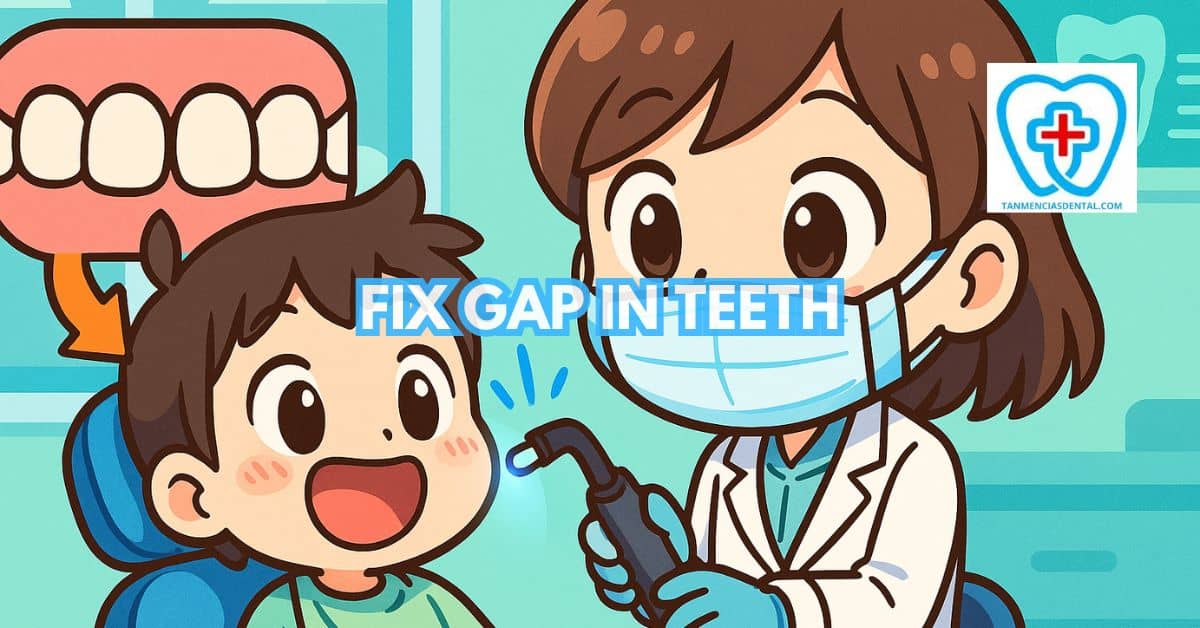Gaps between teeth can affect how someone smiles or talks.
These spaces, especially between the front teeth, are very common.
Dental bonding is a fast and budget-friendly way to close them.
It doesn’t require surgery or long treatment plans.
You’ll learn how bonding works and why it might be the right option for you.
1. What Is Dental Bonding?
Dental bonding is a treatment where a tooth-colored resin is applied to teeth.
The resin is shaped to fill or cover small gaps and then hardened using a special light.
This creates a strong bond between the material and your natural tooth.
The resin is carefully matched to your tooth color to make it look natural.
It’s often used for fixing small gaps, chips, or uneven teeth.
🦷 Do Your Teeth Get Loose With Braces? The Truth About Braces and Tooth Mobility
2. Step-by-Step Bonding Procedure
The process starts with the dentist choosing a shade of resin that matches your natural teeth.
Next, the tooth surface is gently roughened to help the resin stick better.
A conditioning liquid is applied to prepare the area.
The dentist adds and shapes the resin, then uses a curing light to harden it.
Finally, the bonded area is polished until it feels smooth and looks like the surrounding teeth.
🦷 How Much Are Dental Implants Compared to Other Tooth Replacement Options?
3. Fast Fix: One-Visit Results
Dental bonding is usually completed in a single dental visit.
Most procedures take 30 to 60 minutes per tooth.
This makes it one of the quickest ways to fix a gap in teeth.
You can walk in with a gap and leave with a complete smile the same day.
There’s no need to wait for lab work or use temporary materials.
🦷 Why Fixing Front Teeth Gap Can Boost Your Confidence and Smile
4. Affordable Solution for Gaps
Bonding is one of the most affordable cosmetic dental treatments available.
It costs far less than braces, crowns, or veneers.
Most people can cover the cost without payment plans or insurance.
Since it requires fewer materials and less time, the overall expense stays low.
For fixing small gaps, it offers great value without high costs.
🦷 How Eco-Toothbrushes Are Revolutionizing Oral Hygiene and Sustainability
5. Who Can Benefit From Bonding?
People with small to medium gaps between their front teeth are good candidates.
Dental bonding is best for individuals with healthy teeth and gums.
Teens and adults who want fast cosmetic changes often choose this method.
It’s also useful for repairing chipped or worn teeth.
However, it may not be suitable for large gaps or bite alignment problems.
🦷 Why Switching to an Environmentally Friendly Electric Toothbrush Can Reduce Your Carbon Footprint
6. Advantages of Dental Bonding
The bonding procedure is usually painless, and numbing is often not needed.
It preserves most of the natural tooth structure, keeping your teeth strong.
Bonded teeth blend in well with surrounding teeth and look natural.
The treatment is quick and doesn’t require follow-up visits.
In many cases, bonding can be reversed or adjusted later if needed.
🦷 What Foods and Drinks to Avoid for Healthy Teeth
7. Durability and Maintenance Tips
With good care, bonded teeth can last 5 to 10 years.
Avoid biting on hard objects like ice, pens, or fingernails.
Brush twice daily and floss to keep the area clean.
Regular dental visits help ensure the bonding stays in good shape.
If you grind your teeth, wearing a night guard can prevent damage to the bonded teeth.
🦷 How Technology Is Changing the Way We Experience Dental Exams And Cleanings
8. Transform Your Smile Aesthetically
Fixing a gap with bonding can make a big difference in how your smile looks.
The treatment provides a more even, full appearance without the need for braces.
The resin is shaped and colored to match your natural teeth.
Many people feel more confident after bonding because their smile looks better.
It may also improve how your teeth fit together when biting or speaking.
🦷 How to Choose the Best Clinic for Orthodontic Treatment In Marikina
9. Limitations and Potential Risks
Bonding materials are not as strong as natural teeth and can chip or break.
The resin may stain over time, especially if you drink coffee, tea, or red wine.
Bonding doesn’t last as long as crowns or veneers, especially for back teeth.
It’s best for minor fixes, not major dental repairs.
You may need to have the bonded area repaired or replaced after a few years.
🦷 What Are the Top Innovations in Modern Dental Toothbrushes?
10. Bonding vs. Other Gap-Fixing Options
Braces work well for large gaps or bite issues, but take months to show results.
Clear aligners are also effective, but need time and commitment.
Veneers are long-lasting but expensive and involve more tooth removal.
Bonding is faster and keeps most of your natural tooth intact.
For small gaps and quick fixes, bonding is often the best option.
🦷 Full-Service Family Dentistry in Marikina
👨⚕️ Conclusion
Dental bonding is a fast and affordable method to fix a gap in teeth.
It’s ideal for small gaps and usually completed in just one visit.
The results look natural and improve both the appearance and function of your smile.
Although bonding may need occasional maintenance, it remains a smart, cost-effective choice.
If you want a simple and quick solution, dental bonding is definitely worth considering.
😊 Self-Promotion
Come visit us at Tan-Mencias Dental Clinic at 44 G. Del Pilar Street, Parang, Marikina City!
We’re here to help you smile with confidence through caring and quality dental service.
If you have any questions, you can call us at 0917 145 1074.
You can also message us on our Facebook page or through the contact form on our website.
We’re always happy to hear from you and ready to help with your dental needs!

